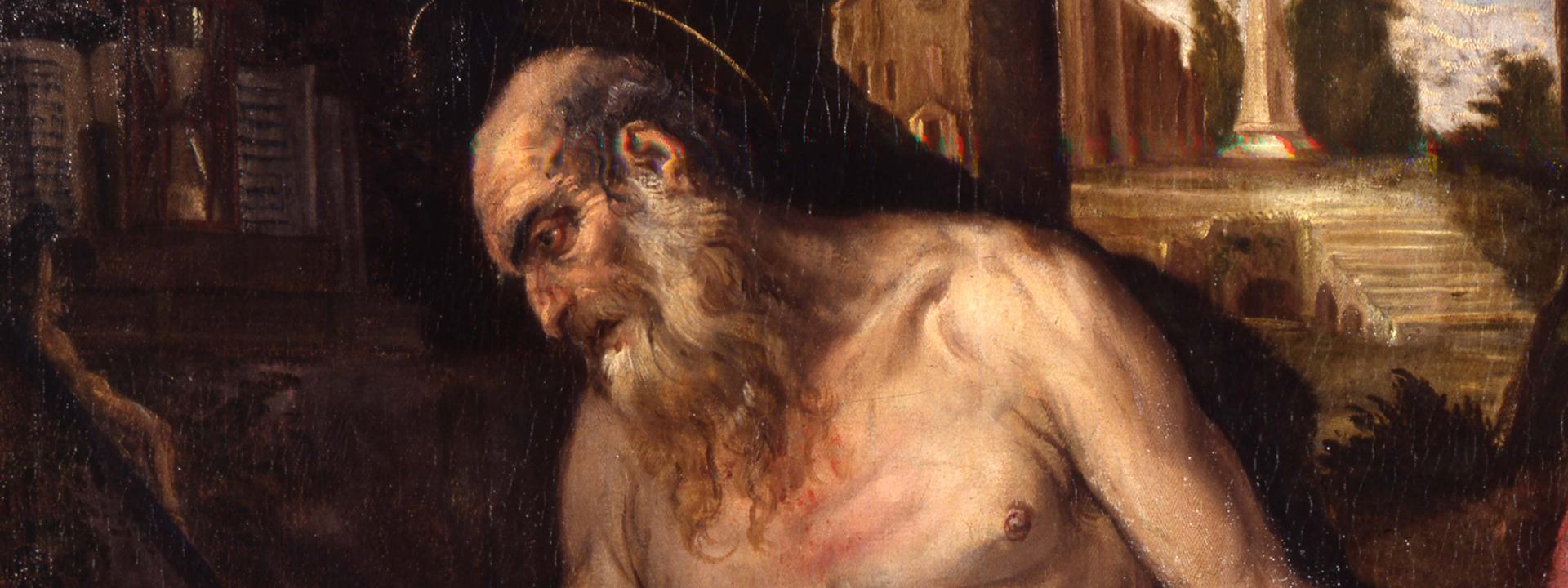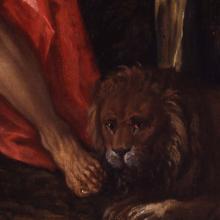The work was made for the Augustinian nuns’ church of Sant’Andrea della Zirada in Venice, which can still be found in the sestiere of Santa Croce although it is no longer used for services. The painting remained in the church unti 1971 when, for precautionary reasons, it was placed in the Gallerie dell’Accademia deposits.
The canvas presents an iconography the painter had already dealt with, for example in the painting for Francesco degli Albori in the church of Santa Maria degli Angeli on Murano. Saint Jerome, a Father and Doctor of the Church who lived between the fourth and fifth century, is depicted in an old hut as he is intent on contemplating the crucifix and beating his breast with a stone. He is surrounded by his usual attributes: a tame lion, a crucifix, a skull, his books, an hourglass, and his cardinal’s cap hanging on a trunk. The natural background contains a church and an obelisk at the summit of a cliff, perhaps an allusion to the symbolic goals of the the saint’s own path to sainthood.
The altarpiece, unanimously ascribed to Veronese’s mature phase, around 1580, is astonishing for the frankness of its brushstroke, rich chromatism, and the expressive intensity of the face of the erudite ascetic.




